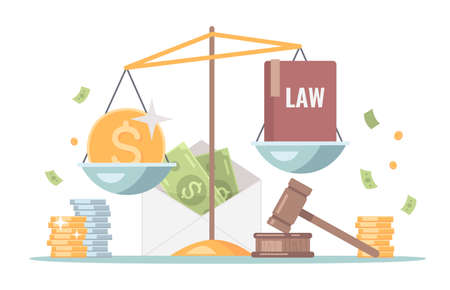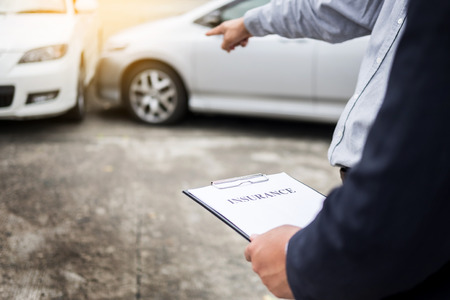Introduction to Auto Insurance in the US
Auto insurance is a crucial part of life for anyone who owns or drives a vehicle in the United States. Not only does it provide financial protection against accidents and unexpected events, but it’s also legally required in almost every state. Many people assume that insurance is just another monthly bill, but understanding its importance can make a big difference when the unexpected happens. Common misconceptions—like believing full coverage means “everything is covered” or that minimum coverage is always enough—can leave drivers vulnerable to denied claims and costly out-of-pocket expenses. In reality, auto insurance policies are made up of various coverage types, each designed to protect you, your passengers, and others on the road. From daily commutes to weekend road trips, having the right coverage is an essential part of responsible driving in American culture. Knowing how auto insurance works and recognizing your legal obligations can help you avoid unnecessary headaches and ensure peace of mind every time you get behind the wheel.
2. Mandatory vs. Optional Coverage
When it comes to auto insurance in the United States, not all coverages are created equal. Some are required by law, while others are entirely optional but highly recommended depending on your needs and financial situation. Understanding the difference is crucial not only for legal compliance but also to avoid unexpected out-of-pocket costs if you ever need to file a claim.
State Minimum Requirements
Each state sets its own minimum requirements for auto insurance coverage. Typically, these include liability coverage that pays for injuries or damage you cause to others in an accident. However, the required amounts vary widely from state to state. For example:
| State | Bodily Injury Liability (per person/per accident) | Property Damage Liability |
|---|---|---|
| California | $15,000 / $30,000 | $5,000 |
| Texas | $30,000 / $60,000 | $25,000 |
| Florida | No BI Required* | $10,000 |
*Florida requires Personal Injury Protection (PIP) instead of Bodily Injury Liability.
Optional Coverages
While meeting your states minimum requirements keeps you legal on the road, it may not be enough to fully protect your finances. Here are some common optional coverages:
- Collision: Pays for damage to your car after an accident, regardless of fault.
- Comprehensive: Covers non-collision incidents like theft, fire, or natural disasters.
- Uninsured/Underinsured Motorist: Protects you if youre hit by a driver with no or insufficient insurance.
- Medical Payments or Personal Injury Protection (PIP): Helps with medical expenses for you and your passengers.
- Rental Reimbursement: Covers rental car costs while your vehicle is being repaired.
The Importance of Meeting Legal Standards
If you fail to meet your states mandatory insurance requirements, you could face serious consequences such as fines, license suspension, or even criminal charges. Worse yet, if youre involved in an accident without adequate coverage, you could be personally responsible for damages and injuries—putting your savings and assets at risk. Always double-check your policy to ensure youre meeting the legal standards in your state and consider adding optional coverages for greater peace of mind.

3. Liability Coverage: Bodily Injury and Property Damage
When it comes to auto insurance in the US, liability coverage is one of the most fundamental—and legally required—types of protection you’ll encounter. In simple terms, liability insurance is designed to cover costs if you’re at fault in an accident that causes injury to other people (bodily injury) or damage to their property (property damage). Let’s break down what this means for everyday drivers and highlight why having the right limits is crucial.
What Does Liability Insurance Cover?
Liability coverage comes in two main parts: Bodily Injury Liability and Property Damage Liability. Bodily injury pays for medical expenses, lost wages, and sometimes legal fees if you injure someone in a crash. Property damage covers repairs or replacement costs for another person’s vehicle or property (like a fence or mailbox) that you’ve damaged. It’s important to note: liability does not pay for your own injuries or vehicle repairs.
Financial Protection When You Need It Most
This coverage protects you from out-of-pocket expenses that can quickly add up after an accident. For example, if you cause a multi-car pileup on the freeway, medical bills and repair costs could easily reach tens or even hundreds of thousands of dollars. Your liability insurance steps in to pay those bills—up to your policy limits—so you aren’t stuck with life-changing debt.
Real-World Scenario: Why Limits Matter
Imagine you have state-minimum coverage, but you cause an accident with serious injuries totaling $100,000 in medical bills. If your bodily injury limit is only $50,000 per person, you’re personally responsible for the remaining $50,000. That’s why many experts recommend higher limits than the legal minimum. Insufficient liability coverage can result in lawsuits and wage garnishment—major headaches no one wants.
Refusal of Claims: Know Your Policy!
A common pitfall is assuming liability covers everything. Remember: it only protects others—not your own car or injuries. Also, insurers may deny claims if you violate policy terms (like driving under the influence). Always review your coverage details and exclusions carefully to avoid surprises when filing a claim.
4. Comprehensive and Collision Coverage
When shopping for auto insurance in the US, two essential coverage types youll encounter are comprehensive and collision coverage. While both protect your car, they apply to very different situations. Understanding these differences is critical to avoid unexpected claim denials and ensure you have the right protection.
Comprehensive Coverage
Comprehensive insurance helps pay for damage to your vehicle caused by incidents other than a collision. Think of it as “everything except a crash.” Here are some common examples:
| Scenario | Is It Covered? | Type of Coverage Needed |
|---|---|---|
| Your car is stolen from your driveway | Yes | Comprehensive |
| A tree branch falls on your parked car during a storm | Yes | Comprehensive |
| You hit a deer while driving on a rural road | Yes | Comprehensive |
| Your windshield is cracked by a flying rock | Yes (often with special glass deductible) | Comprehensive |
| Your car is damaged in a riot or vandalized overnight | Yes | Comprehensive |
| You back into a pole at the grocery store parking lot | No | Collision (not comprehensive) |
Tip: Comprehensive coverage is optional in most states but may be required if you lease or finance your vehicle. If you live in an area prone to severe weather, animal collisions, or theft, comprehensive can save you thousands in out-of-pocket costs.
Collision Coverage
Collision insurance steps in when your car hits, or is hit by, another object—regardless of fault. This includes:
- Crashed into another vehicle (even if you caused the accident)
- Your car flips over or rolls off the road after skidding on ice
- You run into a fence, guardrail, or building with your car
- A hit-and-run driver damages your parked car (varies by insurer and state)
Caution: Collision does not cover normal wear and tear, mechanical breakdowns, or damage not related to driving accidents. Always check your policy details—some drivers assume collision covers everything, leading to denied claims.
Main Differences: At-a-Glance Comparison
| Comprehensive | Collision | |
|---|---|---|
| Covers Theft? | Yes | No |
| Covers Weather Damage? | Yes (hail, floods, etc.) | No |
| Covers Animal Collisions? | Yes (deer/elk/moose/etc.) | No (unless you swerve and hit something else) |
| Covers Hitting Another Car? | No | Yes (regardless of fault) |
| Covers Vandalism? | Yes | No |
| Covers Single-Car Accidents? | No (unless non-collision event like fire) | Yes (if you crash into something) |
| Lender May Require? | Yes (if financed/leased) | Yes (if financed/leased) |
Real-Life Example: Why You Might Need Both Coverages
If you’re driving through a storm and a tree branch smashes your windshield—comprehensive coverage pays. But if you lose control on slick roads and hit a guardrail—collision coverage kicks in. Many drivers choose both to protect against the widest range of risks. Before declining either type, consider your local weather, crime rates, and how much you could afford to pay out-of-pocket if disaster strikes.
Remember: Not all damages are treated equally under each coverage type. Review your policy carefully or ask your agent which events are covered—you don’t want surprises when it’s time to file a claim!
5. Other Important Coverage Options
When reviewing your auto insurance policy, it’s easy to focus only on the basics like liability, collision, and comprehensive coverage. However, there are several other coverage options that can make a huge difference when accidents or unexpected events occur. Understanding these choices is essential for protecting yourself financially and avoiding common claim denials.
Uninsured/Underinsured Motorist (UM/UIM) Coverage
If you’re hit by a driver who doesn’t have insurance or whose policy limits aren’t enough to cover your damages, uninsured/underinsured motorist coverage steps in. In many states, this coverage is optional—but it’s highly recommended. Imagine you’re rear-ended at a stoplight and the at-fault driver has no insurance; without UM/UIM, you could be left paying for medical bills and car repairs out of pocket. Many claims get denied if you don’t carry this extra protection, especially in hit-and-run cases.
Personal Injury Protection (PIP)
Personal Injury Protection is mandatory in some states (often called “no-fault” states), and optional in others. PIP covers medical expenses for you and your passengers regardless of who caused the accident. It often includes lost wages and sometimes even services like childcare if injuries prevent you from working. If you live in a no-fault state like Florida or New York, skipping PIP could mean denial of critical medical claims after an accident—even minor ones.
Roadside Assistance
This add-on might seem unnecessary—until you find yourself stranded with a flat tire or dead battery late at night. Roadside assistance helps with towing, jump-starts, lockouts, fuel delivery, and more. Many drivers assume their basic insurance will help if their car breaks down, but standard policies usually don’t cover these situations. Without roadside assistance, you’ll pay out-of-pocket for emergency help—and insurers won’t reimburse these costs unless this option is included in your policy.
Don’t Overlook These Options
While these coverages are sometimes viewed as optional extras, they can be lifesavers during stressful moments on the road. Always check your state requirements and speak with your agent about real-life scenarios where each type of coverage applies. Failing to add them now could lead to denied claims or huge financial burdens later on.
6. Exclusions and Common Reasons for Claims Denial
Understanding what your auto insurance policy does not cover is just as important as knowing what it does. Most U.S. auto insurance policies contain specific exclusions—situations or types of damage where coverage will not apply. The most common exclusions include:
Typical Policy Exclusions
- Intentional Damage: If you or someone covered under your policy intentionally causes damage, your claim will be denied.
- Driving Without Permission: If the driver did not have permission to use the vehicle, coverage usually doesn’t apply.
- Racing or Stunt Driving: Accidents that occur while participating in street racing or other illegal activities are typically excluded.
- Using the Vehicle for Commercial Purposes: Personal auto policies do not cover accidents that happen while using your car for business or rideshare driving (unless you have special endorsements).
- Unlisted Drivers: If someone not listed on your policy is driving, your insurer may deny a claim.
Common Reasons for Claims Denial
- Lapsed Policy: Missing payments can cause your policy to lapse, leaving you without coverage at the time of an accident.
- Misinformation on Application: Providing incorrect information (like your address or usage habits) can lead to denial.
- No Proof of Loss: Failing to provide documentation—such as police reports or repair estimates—may result in rejection.
Practical Tips to Avoid Claim Denials
- Always update your policy with new drivers, address changes, and new vehicles.
- Avoid risky behavior like lending your car to unlisted drivers or using it for business without proper coverage.
- Read the fine print—know exactly what is and isn’t covered so there are no surprises if you need to file a claim.
Remember:
If you’re ever unsure about what your policy covers, reach out to your insurance agent before an incident occurs. Being proactive can help prevent claim headaches down the road!
7. Tips for Choosing the Right Coverage
Picking the right auto insurance coverage in the US isn’t just about finding the lowest price—it’s about making sure you’re truly protected if something goes wrong. Here’s a practical guide to help you evaluate your needs, understand policy language, and steer clear of costly mistakes that could lead to denied claims.
Assess Your Personal and Legal Needs
Start by considering both your state’s minimum legal requirements and your personal situation. For example, while most states require liability coverage, you may want to add collision or comprehensive insurance if you have a newer car or a loan on your vehicle. Don’t assume the state minimum is enough—if you cause an accident with serious injuries or property damage, state minimums often fall short and leave you paying out of pocket.
Read Policy Language Carefully
Insurance policies are filled with terms like “deductible,” “exclusion,” and “endorsement.” Don’t gloss over these! If you don’t understand what’s covered (and what’s not), ask your agent for clarification. For instance, some policies exclude coverage for rideshare driving (like Uber or Lyft)—a common reason for denied claims. Always check for restrictions that might apply to how you use your vehicle.
Balance Cost with Protection
It can be tempting to choose the cheapest option, but low premiums often mean higher deductibles or less coverage. Consider whether you could afford to repair or replace your car out-of-pocket if you opt for a bare-bones policy. Sometimes, a slightly higher premium gives much better peace of mind and financial protection.
Practical Example
If you drive an older car worth only a few thousand dollars, it might make sense to skip comprehensive and collision coverage. But if you commute daily in heavy traffic or live in an area prone to theft or natural disasters, those coverages could save you thousands—even if your car isn’t brand new.
Avoid Common Mistakes That Lead to Denied Claims
Be honest when answering application questions—misstating facts (like who drives your car) can void your policy. Update your insurer promptly about changes such as moving states or adding a new driver. Failing to do so is a frequent reason for claim denials in the US.
When in Doubt, Ask Questions
Don’t be shy about seeking clarification from your insurance agent or company rep. A quick phone call can help you avoid misunderstandings—and prevent surprises when you need coverage most.
The bottom line: Take time to match your policy with your real-world needs, and always double-check the fine print so there are no surprises if you have to file a claim. Being proactive now can help prevent headaches—and denied claims—down the road.

